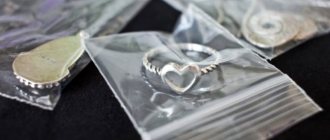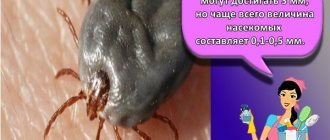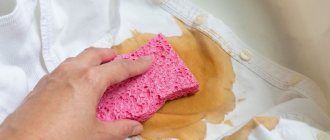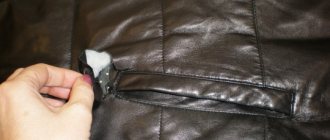What fabrics should you choose from to avoid looking wrinkled?
For evening walks in Prague, I bought a light summer dress in boho style. The trip around Europe was planned by bus, and in small hotels I had to run around looking for an iron, wasting precious time on ironing. After returning from the trip, I started thinking about what fabrics don’t wrinkle and what to do so that dresses don’t wrinkle so much.
What determines the wrinkleability of fabric?
First I studied the theory. It turns out that the property of creasing and wrinkling is inherent in most fabrics. But the homogeneous structure of synthetic fiber allows it to quickly restore its shape after mechanical stress. Fine? Yes, but in return we get the inability to absorb moisture and let air through.
Threads created by nature from silk, linen, cotton and wool are loose in structure. They have air-filled cavities, which, on the one hand, create comfort for our body. On the other hand, they deform under loads and the smoothness and evenness of the surface are disrupted.
Thick, dense materials wrinkle less than thin and airy materials. The way of weaving the weft and warp threads is also important: jacquard wrinkles more difficult than satin and crepe de Chine, which wrinkle less than simple linen.
Life hack: how to fold a shirt correctly so it doesn’t wrinkle.
How to properly wash men's shirts in a washing machine: Review + Video
The classic men's shirt is no longer a wardrobe item exclusively for special occasions or holidays. For most managers, consultants and employees in leadership positions, this is an everyday uniform that requires careful and careful care. A neatly ironed and washed shirt, like shoes, is the face of not only a man, but also his woman, as a housewife. In order for the item to remain in its original form for a long time, not change color and keep its shape, it is necessary not only to know how to wash men’s shirts correctly, but also to ensure the correct type of drying and ironing at the appropriate temperature.
Basic washing methods
For complex stains, you can use dry cleaning services, but frequent visits to this organization will significantly hit your pocket, and most, even the most ingrained stains, will not be difficult to deal with at home. Depending on the type of fabric, you need to decide on the washing method; if the tags on the product allow you to use an automatic washing machine, then the main condition in this situation is choosing the right mode. Otherwise, you should use hand washing.
Handwash
This washing method should be used first if the shirt does not stop dyeing and continues to shed heavily even after soaking. Also, recommendations for hand washing can be found on product labels and tags; most often, such a mark is on shirts made of delicate fabrics. For proper hand washing, there is a certain algorithm that breaks the entire process into small steps that minimize the possibility of damage to the product :
- First, you need to pour warm water into a basin or bath; the temperature should not exceed 40 degrees. When using boiling water or too hot water, there is a high probability of changing the shade of a colored shirt or getting a yellowish tint on a white shirt.
- Secondly, washing powder is added for hand washing, for white or colored items, respectively. The shirt must be soaked and left for 20-30 minutes.
- Thirdly, especially heavy stains can be washed off additionally using laundry soap, after which the stained area should be lightly rubbed with your hands or a soft brush.
- Fourthly, the shirt must be rinsed several times in cold running water, and then gently wrung out without using twisting movements. If the stain is not completely washed off, the product should be soaked for a longer period.
When soaking white shirts, it is recommended to add bleaching agents to the powder, but do not contain chlorine. With the help of bleach, the shirt takes on a fresher look, and stains are removed much easier and faster.
Machine washable
Washing in an automatic machine greatly simplifies the process, saving time and effort. However, simply putting the shirt in the drum is not always enough. Considering that most men's shirts require washing exclusively on a delicate cycle and at low temperatures, heavy stains may not be washed off the first time. In order for the end result to meet expectations, you must strictly follow the main rules that are suitable for cleaning things in a washing machine.
- Preparation. The following process takes a little time, but is very important and you should not neglect these recommendations. It is best to avoid loading the drum with other items when washing men's dress shirts, but this is not a requirement. If the product is washed with a large number of clothes, it is necessary to sort it by color. White shirts should always be washed separately, while colored shirts should be separated into appropriate shades to avoid staining.
Before washing, you need to check all pockets for foreign objects, remove special bones from the collar, and fasten all buttons, including those on the cuffs. This way, the item will not get intertwined with other items during the washing process and will not wrap around the drum. Before washing, turn the shirt inside out and read the basic instructions on the labels.
- Soak. This procedure is especially necessary if the item has become grayer and duller, and the stains are difficult to remove. However, this point can be abandoned if the functionality of the washing machine includes a washing mode with soaking. If there is no such function, then you should soak the shirt in warm water, after rubbing the armpits, cuffs and collar with laundry soap. After this treatment, the item should be left for half an hour, then rinsed thoroughly in cold water and proceed to the main wash procedure.
- Wash. To wash shirts, it is recommended to use the delicate cycle and add washing powder in two stages. The first half should be poured into a special compartment before starting washing, and the second half, along with the conditioner, 3-5 minutes after the start of water collection. You can also add a specialized bleaching agent to the additional compartment, but without chlorine.
Powder cannot always cope with serious stains, in particular with traces of sweat in the armpit area. To remove them, you should use lemon, squeeze the juice onto the desired area and leave the shirt for 30-40 minutes, and only after this procedure put it in the wash.
How to starch a wedding or fluffy dress
A large and voluminous dress is much more difficult to starch. Most often, such dresses are created from several parts: an outer dress and petticoats. Therefore, in order to starch them, the dress is usually disassembled.
Wedding and ball gowns are starched in the following order:
- Starch petticoats with the most concentrated solution. They are processed separately in a basin. This will require 2-3 liters of solution.
- Petticoats don't wring out. They are allowed to drain and then hung to dry on a hanger.
- It is not necessary to starch the outer dress. It's easy enough to stroke it. But for greater pomp, you can treat it with a light composition. This will require about 10 liters of concentrated solution. It is poured into a bath, where water is added, reducing the concentration. After this, the dress is lowered there and caressed.
- The dress is not wrung out, but allowed to drain. After this, hang it over a bathtub of hot water to steam it.
- When the fabric is partially dry, the dress needs to be ironed.
Types of fabrics and their features
In order to decide which washing method to use, it is necessary to take into account the main material of the product. Also, the type of fabric is a key factor in choosing the appropriate mode and the right temperature.
Cotton
Products made from cotton are universal and least capricious, perfect for both hand and machine washing. However, items made from this particular material most easily lose their presentable appearance, become less bright and acquire stains faster than similar items made from other types of fabrics. Cotton items shrink easily if the temperature is incorrectly selected, but they lose no more than 5% of the original size of the product. Cotton shirts can also use bleach.
Linen products are capable of severe shrinkage, and if you get a shirt from a low-quality manufacturer, then after washing you can get the item down to one size smaller. It is best to wash a linen shirt at minimum temperatures with the addition of softening agents. However, you can use both types of washing, excluding, in the case of manual washing, increased mechanical squeezing, which will lead to serious deformation of the material. Also, overdrying is very dangerous for linen shirts, in which case the fabric will lose its basic properties and can easily tear.
For a silk shirt, it is necessary not only to create the most delicate washing conditions, but also to avoid twisting and wringing. As a washing powder, you should use products specially designed for this material, marked “Silk” on the packaging. If there is no such product, then you can use liquid gel for washing baby clothes. And to preserve the original shine, you should resort to the traditional method and add a couple of tablespoons of vinegar solution when soaking.
Where is viscose used?
Viscose is used for the production of viscose non-fibrous products (cellulose film plasticized with glycerin - cellophane) and for spinning viscose fiber.
Interesting materials:
How to sharpen a hand-held vegetable grater? How to brew linden for a child’s cough? How to brew ready-made masala tea with milk? How to brew rice overnight? How to brew ginger and lemon in a thermos? How to wind a watch with a quartz movement? How to tie the ends of a rope? How to tie a towel on a client's head? How to tie a knot in a rope without taking your hands off? How does the capacitance of a capacitor depend on the dielectric?
Rules of care
In order for your favorite shirt to last longer and maintain a presentable appearance, it is not enough to follow the basic rules of successful washing; you also need to take into account methods for proper drying without deforming the fabric and ironing at optimal modes and temperatures.
Drying
The main criterion when choosing the optimal drying method is the type of fabric from which the product is made, but there are also general recommendations that must be followed to properly care for any shirt.
- Under no circumstances should the product be dried by throwing it over a clothesline. This point must be taken into account so that there are no creases or excessive wrinkles on the shirt. When drying in this way, the material is significantly deformed, and the consequences cannot always be eliminated even with the help of a powerful iron.
- It is recommended to dry shirts on hangers, avoiding contact with other things. Even after washing, while the items are still damp, the proximity of white and colored clothing can lead to staining.
- During drying, you should carefully straighten the fabric and unbutton the cuffs, this way fewer wrinkles will form, which will significantly reduce ironing time in the future.
If the item shrinks a little after washing, then before drying it is necessary to slightly stretch the shirt; this procedure should be carried out as carefully as possible and only with the item still damp.
Ironing and steaming
The process of ironing washed shirts is not easy and is far from the most favorite among most housewives. Steaming is considered the easiest way to get rid of wrinkles, but quick and high-quality results using this method can only be achieved for items made of thin and delicate fabrics. This method is the safest for these materials. It is possible to steam a cotton shirt with high quality, but the process will take more time and effort than a similar procedure using an iron.
To achieve the best result, there are also several general rules, following which you can reduce time costs and at the same time get a high-quality ironed item.
- You should not wait for the shirt to dry completely; it is much easier to iron a slightly damp item, but you must strictly observe the temperature regime so as not to spoil the product.
- The sequence of this procedure also plays a very important role and it is the same for products made from all types of fabric. First, iron the cuffs and sleeves, followed by the back and front side. Lastly, the area near the buttons and collar are ironed. Adhering to this scheme will help minimize the appearance of new folds.
- The ironed item must be hung on hangers and the top button fastened so that the collar does not lose its shape. It is not recommended to put on a shirt immediately after ironing; while the material is still warm, it wrinkles much faster.
Using these tips, you can not only extend the life of your items, but also maintain the original quality of your favorite shirt.
Source
How to iron home textiles
Sheets with elastic
Ironing a sheet with an elastic band around the perimeter is not for the faint of heart. It is not clear how to fold it and place it on the ironing board.
You can iron the sheet immediately before use. Pull it onto the mattress and run the iron over it. If the issue of storing ironed bed linen is important, you can iron the sheet on the mattress, then carefully roll it up. Fold it in half and tuck one corner into the other on each side, then in half again so that all corners are aligned. Spread the resulting rectangle on the table and fold it like a traditional sheet.
Duvet covers
Fold the duvet cover into quarters. Iron on one side, turn over and repeat the procedure. Unfold the duvet cover and fold it again so that the unironed sides are on the outside. Iron again on both sides. Repeat until all the fabric is straightened.
Silk bed linen
It is better to iron silk from the inside out so as not to damage the delicate fabric. Be sure to keep the labels that indicate what ironing temperature the manufacturer recommends using for the product, and strictly follow these tips.
It is not recommended to spray silk linen with water while ironing: streaks may remain.
If there is a need to moisten the item, it is better to spray it with a spray bottle and put it in a plastic bag for an hour. This way the product will be evenly saturated with moisture.
Tablecloths
Iron the edge first, then move on to the center part. If the product is very dry, spray it with a spray bottle and roll it up so that it is moistened evenly. For cotton and linen tablecloths, use hot water; its fabric absorbs better.
Curtains
Curtains should be ironed when they are still damp. Start ironing the curtain from top to bottom. When the top edge drops from the ironing board almost to the floor, hang the curtain on the curtain rod. Continue stroking the bottom, smoothing it out onto the board. This way you will avoid creases and contamination of the fabric. Lambrequins can also be ironed while wet.
For synthetic fabrics, there is a life hack that will allow you to do without an iron altogether. Hang damp curtains on the curtain rod - they will smooth out under their own weight.
Fabric Crease Rating
Almost all fabrics have the ability to wrinkle. Of course, the structure of synthetic fibers contributes to their recovery after the cessation of mechanical stress, but the flip side of this phenomenon is the lack of air exchange, moisture absorption and thermoregulation.
The structure of natural linen, cotton, silk and wool threads is not as uniform as synthesized materials. They have air-filled cavities that create comfort upon contact with the skin, but deform under load, thereby disrupting the smooth and beautiful appearance of the surface.
- Linen is considered the champion among highly wrinkled fabrics.
- Natural silk is not much inferior to it.
- Universal and inexpensive viscose (staple) also wrinkles quickly.
- Indispensable in the heat, feminine and beautiful blouses and dresses made of thin cotton (gauze, cambric, muslin, etc.) require constant ironing - although they are very easy to iron.
- Fine wool also tends to form creases quickly. For dense fabrics such as gabardine, this is less relevant, but, for example, when working sedentarily in an office, unsightly creases may form on your skirt or trousers by the end of the day.
As a rule, dense and thick fabric wrinkles much less than thin and airy fabric. Much also depends on the method of weaving the threads - jacquard retains a smooth surface better than satin and satin, and they, in turn, are much inferior to simple linen texture. Thus, in order for clothes and bedding to look impeccable, you have to spend a lot of time and effort on ironing them. Therefore, the problem of what to do if the fabric is very wrinkled, and whether there are any means to correct this defect, concerns many people.
How to smooth it out correctly?
The rules for ironing a cotton shirt require step-by-step processing. First, the smaller details (cuffs and collar) are ironed, then the sleeves, front and back .
A convenient, organized place reduces labor costs and allows you to iron a cotton shirt quickly and effortlessly.
Collar
the collar of a cotton shirt is very wrinkled, it is recommended to moisten it well beforehand .
Iron movements should be performed with pressure, ensuring better straightening. The direction of processing is from the corners and edges to the middle, paying attention to the corners.
First, the collar is ironed from the inside out, then from the face. The fold should not be smoothed . Particular care is required when processing the placket and the area around the top button.
Cuffs
The cuffs on the long sleeves of a shirt are the place where you begin to iron the sleeve. Several layers of material and the rigid shape of the cuff require ironing with force.
Start ironing from the wrong side, then move to the front side . Double cuffs are ironed in a completely turned-out state, also from the inside and from the face. After this, they are folded and ironed in the desired position, fixing with an iron.
Sleeves: how to avoid wrinkles?
It is convenient to iron short and long sleeves of shirts using the sleeve holder.
It allows you to iron the fabric in one layer. The direction of movement of the iron is selected from the seam to the edge. You should not smooth out the arrows on the sleeves.
How to starch a skirt or children's dress
Most often, children's dresses are subjected to hard starching. Well starched, they will keep their magnificent shape throughout the holiday and make the girl look like a little princess.
To starch an ordinary children's dress, you will need 2-3 liters of solution.
The procedure for starching a children's dress:
- Prepare a solution and pour it into a large basin.
- Dip the dress into the hot solution and rinse in it for 5-10 minutes.
- Remove from the basin, place on a board and let the solution drain.
- There is no need to wring out the dress. After the bulk of the liquid has drained, the dress needs to be hung on a hanger and all the details straightened out.
- When the item is semi-dry, it needs to be ironed.
After this, your chic outfit is ready.
When is the bruise almost invisible?
Crease test
When purchasing a new item or material for its manufacture, you should always check how much it wrinkles. To do this, squeeze the edge of the fabric tightly in the palm of your hand and hold it for at least 10 seconds . If the resulting creases do not straighten out, you will need special means to maintain the product in decent shape.
To make the fabric wrinkle less, crush it yourself
- A fairly effective technique for making clothes wrinkle less is cutting with a bias thread.
- The material does not wrinkle so much if a special finishing is used in its manufacture, but unscrupulous manufacturers may make it disappear after the first wash.
Companies producing high-quality natural fabrics use selected raw materials with increased thread twist and high weaving technologies. In this case, a slight wrinkle in the suit looks very elegant and is a sign that its owner wears luxury, expensive items
Crash fabrics with specially industrially applied creases also look very stylish. This operation can also be done at home.
Stages of a “home crash”:
- To do this, a thin fabric (can be mixed or synthetic) must be soaked in cool water and wrung out before cutting.
- Then the material is laid out on a flat surface and gathered in small folds on each side, after which it is rolled up into a rope (this is best done with two people) and twisted into a knot, which is tied with cotton braid.
- Place the twisted fabric in the microwave for 4 minutes (minimum setting), then take a break for 4 minutes and repeat this up to five times, and leave until completely dry.
From such fabric you can sew a crinkled straight skirt or dress that will withstand several washes, after which the “home crash” operation can be repeated.
Good old starch - and more
Ways to make clothes wrinkle less and bed linen sparkling clean have been known for several centuries - iron and starch.
When exposed to high temperatures, starch emulsion forms a hard but breathable film that not only looks beautiful, but also protects against dirt and also extends the life of the product. In addition, ironing starched material is much easier, methods for starching fabric. For traditional starch, use a teaspoon or tablespoon of starch per liter of water. To prevent dark fabric from wrinkles, use a gelatin solution; It is also recommended for silk and viscose. However, for most modern women, washing by hand is an unaffordable waste of time, which only has to be done for particularly valuable items. For regular machine washing, there are many modern starching products available on the market, made on various bases.
- Products containing modified natural starch work “from wash to wash.”
- Preparations based on PVA emulsions have a semi-permanent effect and, depending on the quality, can make fabrics wrinkle less over several washes.
- Products containing carbamol, which tends to reduce fiber creasing.
- Combined preparations containing all the ingredients of all the above groups.
A starch spray that is sprayed onto fabrics before ironing is very convenient to use . Its basis is a specially selected finishing material. Various sprays can contain both natural starch and synthetic resins, which create a long-lasting crease-resistant effect, as well as surfactants that make ironing easier, borax, which gives a beautiful shine, and other substances.
Starch solution (recipe)
To starch, you must first prepare a starch solution. Its consistency depends on many factors: the type of fabric, the rigidity that the product should receive, the purpose of the product.
Standard proportions for creating a solution:
- Required stiffness
- Type of fabric
- Starch content per 1 liter of water
- Insignificant, the product is starched to maintain a neat appearance
- Silk, chiffon, other fine fabrics
- 0.5-1.5 tsp.
- Soft, the product is starched to maintain its ironed appearance
- Batiste, tulle, organza, thin cotton fabrics
- 1.5-2 tsp.
- Medium hardness. The product must hold a certain shape well, for example, the fullness of a skirt.
- Medium-weight linen or cotton fabric
- 2-3 tsp.
- High. The product must hold its complex shape well and resist gravity. These can be ballet tutus, fabric figures.
- Gauze, cotton and linen fabrics of different textures
- 3-6 tsp.
- To create a solution, you can take any starch: potato, corn, rice, oatmeal. Potato product is best.
Step by step procedure for preparing starch solution:
- Put the water on the fire and heat it up.
- Add starch into the container in small portions, stirring constantly. Make sure that no lumps form. To do this, they need to be broken before adding the substance.
- Thoroughly mix all the starch in the water.
- Bring water to a boil. Remove from heat and let cool slightly.
- Strain the solution through cheesecloth.
After this, the solution is completely ready for use. It is important that it remains warm, as when it cools it will harden and turn into a paste.
What to do if clothes are very wrinkled
When updating our wardrobe for summer, we all mostly give preference to natural fabrics. They have a number of undoubted advantages over synthetic ones: they perfectly absorb moisture and allow air to pass through, which gives a comfortable feeling while wearing. However, they also have one drawback, which sometimes brings a lot of inconvenience - great creasing. You can iron your dress perfectly in the morning, sit down on public transport and... it will lose its neat appearance. The thing is that threads made of linen, cotton and wool have a loose structure: their cavities are filled with air (due to which the skin “breathes” in them) and are easily deformed under load - the surface of the fabric loses its smoothness and evenness. What should you do to ensure that the item does not wrinkle and remains presentable throughout the day?
Rating of wrinkle-resistant fabrics
Before purchasing any item, check whether it is wrinkled. To do this, just squeeze the material tightly in your hand and hold it for 10 seconds. As a result, you will see which tissues are restored and which ones remain damaged. Note that linen, cotton and natural silk wrinkle the most. Viscose fabric - a staple - noticeably wrinkles (in order not to struggle with wrinkles, you can choose a variegated color of the fabric). Satin and chiffon may wrinkle, but to a lesser extent. But fabrics based on polyester or with a small addition of it are completely wrinkle-resistant.
Why do things starch?
Starching things has many benefits. It is no coincidence that this method has been used by many housewives for many centuries.
When starched, each thread receives a kind of protective layer. This process can be compared to hair lamination. Thanks to this system, the thing:
- Does not wrinkle longer, keeps an ironed look better
- The fabric becomes denser
- The fiber is protected from friction, which makes the item last longer
- Things get dirty less, and if dirt gets on clothes, it’s easier to clean it off
- The fabric becomes stiffer and holds its shape better
- The fabric wears out less and rubs less
- Things look new longer
Today, children's or festive dresses with fluffy skirts and other complex elements are most often starched. This is done primarily to give the dress or skirt a beautiful shape.
The most wrinkled fabrics
Let's start with the fact that all fabrics wrinkle: some more, some less, some are even specially processed to create a wrinkled effect. Synthetic fibers in the materials help to more easily restore the shape of things after any mechanical stress.
But natural fabrics are more prone to deformation, and to varying degrees:
- Linen is rightfully considered the most problematic material. Not only is it very difficult to iron it to perfection, but also several hated folds are sure to form while putting things on.
- Next comes silk. The perfect silk surface looks flawless, but achieving flawless smoothness is very difficult.
- Viscose. A universal fabric, quite inexpensive, but easy to care for.
- Natural cotton (cambric, muslin, etc.) is a great option for hot summers. It wrinkles very quickly, but the process of ironing the material is quite easy. However, you still need to iron the fabric regularly.
For products containing other materials
The composition of the fabric from which the shirt is made determines not only the behavior of the item when worn, but also what temperature it is permissible to expose the material to.
Very often, for blouses and shirts, a blended fabric is chosen , which contains not only cotton.
You can check the composition of the fabric on the label, which is usually located on the inside of the product in the side seam.
If there is no label, and there are doubts about the composition of the fabric, it is necessary to start ironing with a minimum temperature , increasing it gradually if necessary.
| Material composition | Ironing temperature, ºС | Peculiarities |
| Cotton | 150-200 | It is possible to apply pressure with an iron and use the steam function. |
| Cotton "reaper" | 110 | No steam. |
| Cotton and linen (cotton more than 50%) | Up to 200 | You can apply pressure to the iron and apply steam. |
| Cotton and polyester (cotton more than 50%) | 110 | The use of steam is limited. |
How to prepare an ironing area
Virtuosos can get the perfect result on a table covered with a blanket, but it is better to have an ironing board. For right-handers, it should be installed with the rounded end to the left, for left-handers, accordingly, to the right. The light should fall on the workplace from the side of the less active hand, the cord should freely follow the iron and not interfere with the ironer.
It’s good to have gauze or a special ironing cloth and a container of water on hand. As a rule, modern irons are equipped with sprinklers, but a spray bottle will help moisten the item much faster.
Things that look harmonious with folds
There are a number of fabrics and things that, having a wrinkled appearance, do not look sloppy, but on the contrary, will highlight your style. But remember: this method is not suitable for all materials and cannot be used in every situation.
The following things can be done without ironing:
- jeans. They have a structure that, after half an hour of wear, will eliminate the wrinkles on its own, but if not, others may think that this was intended;
- sweatshirts, hoodies, cotton T-shirts. Small errors are allowed on these items, provided that these are not marks from clothespins or a “scar” left from drying on a clothesline, unsightly cutting the entire product in half;
- thin cotton jackets. In combination with the right addition, they will allow you to look stunning among “ironed collars” even in an imperfectly ironed form;
- linen outfits. The naturalness of the material, in addition to light, careless bruises, even looks advantageous, adding charm and texture to things;
- work clothes. Shirts made from thin denim do not like a shiny shine, and a slight wrinkle does not spoil their appearance at all.
Whatever one may say, not ironing clothes is not an option. Often, unpleasant and deeply structured creases are discovered at the most inopportune time, when there is absolutely no way to thoroughly deal with them. And what to do if a very wrinkled fabric does not allow the ironing process? You may not know, but an iron is not the only assistant that can smooth out wrinkled fabric.
What things should not be starched?
Treating fabric with starch also has its disadvantages. This processing method is not suitable for every fabric, and starch can ruin some things.
What things should not be starched:
- Products made from synthetics, since starch will not linger here, and such a procedure will not have the desired effect.
- Dark items are not subjected to this treatment, as stains may appear here.
- Products made from thin silk and chiffon should not be starched, as such fabrics will not hold their shape even if starched.
- Do not treat underwear or fabrics that are close to the body in this way. Starch creates a film around the fibers. Fabrics treated with it will not allow air and steam to pass away from the body. In such clothes it will be difficult for your skin to breathe.
In some cases, you can use a weak starch solution, for example, to treat thin fabrics or linen. And sometimes you can use substitutes: gelatin or sugar.
Important! You can starch only clean, well-rinsed fabric. Powder residue can damage the fabric underneath the starch layer. The dirt will be eaten even deeper during this treatment, and then it will be more difficult to wash the item.
Features of ironing 100% cotton
Cotton fabrics are easy to care for and can withstand regular washing and ironing.
The best result of smoothing the material is achieved when processing fabric that is not completely dry. In the case when the product is completely dry after washing, you can moisten it with a spray bottle and let it lie rolled up for about 15 minutes.
There are several ways to iron a cotton shirt :
- pre-moistening the product;
- through a damp cloth, which is placed between the laid out product with the heated sole of the iron;
- using the steam function in the iron;
- using the iron's water spray function;
- using other devices instead of an iron - a steam generator or steamer.
There is no difference between ironing a men's and a women's classic cotton shirt. The exception is additional decorative elements on some women's products, which will require separate processing.
Source
What does non iron mean on a shirt?
Non iron
- this is a special fabric manufacturing technology, thanks to which
shirts
made from this material practically do not wrinkle during the day, they do not even need to be ironed after washing - just shake them and hang them on hangers to dry.
Interesting materials:
Why doesn't my phone detect my location correctly? Why won't my phone accept a flash drive? Why doesn't my phone accept incoming messages? Why doesn't my phone see AirDrop? Why doesn't my phone see the micro SD flash drive? Why doesn't my phone see the new flash drive? Why does my phone detect my location incorrectly? Why does my phone reject the call? Why does the phone say the screenshot could not be saved? Why does my phone give an application error?











